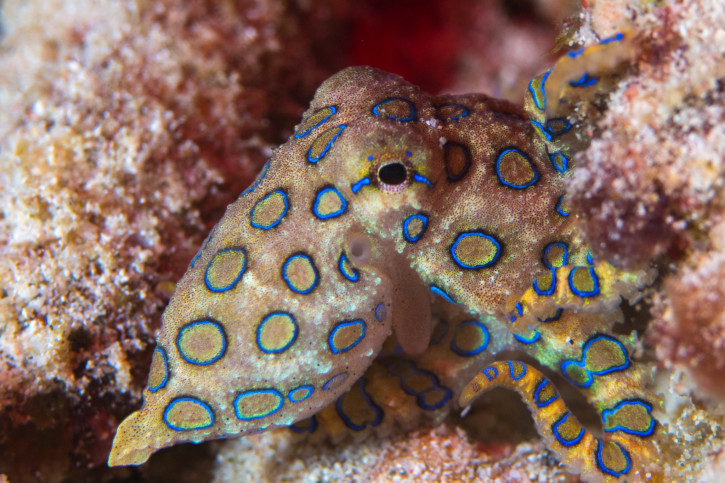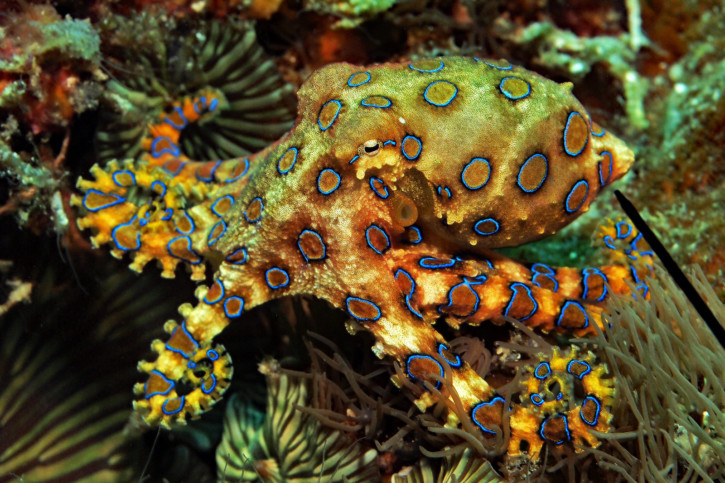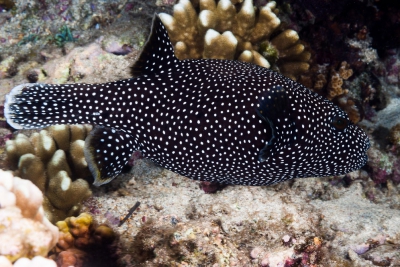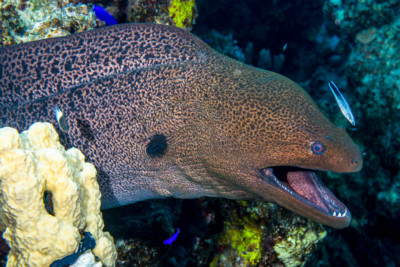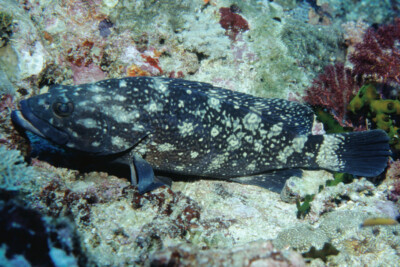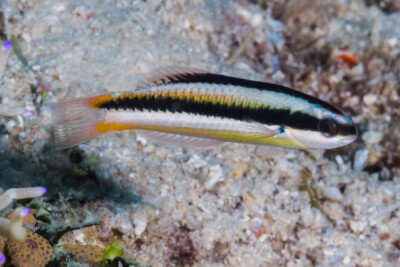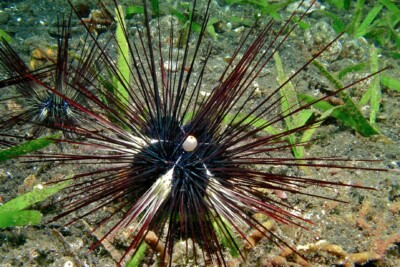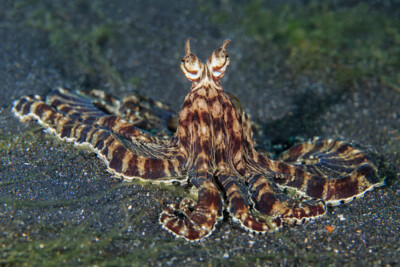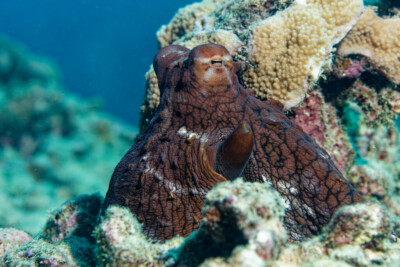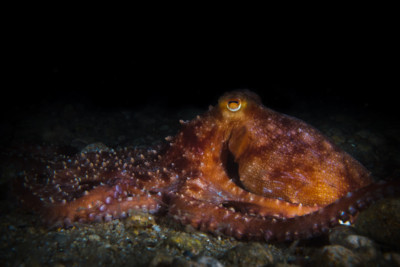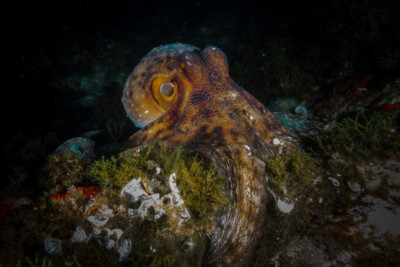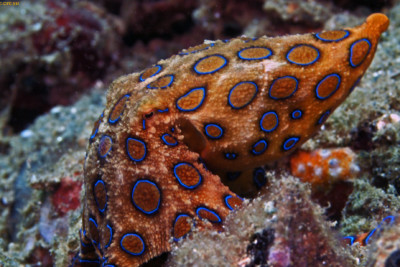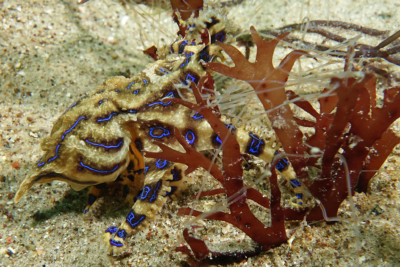Hapalochlaena lunulata
| Scientific name | Hapalochlaena lunulata |
|---|---|
| Descriptor | Quoy & Gaimard |
| Year of description | 1832 |
| IUCN category (World) | LC |
| Family | Octopodidae |
| Genus | Hapalochlaena |
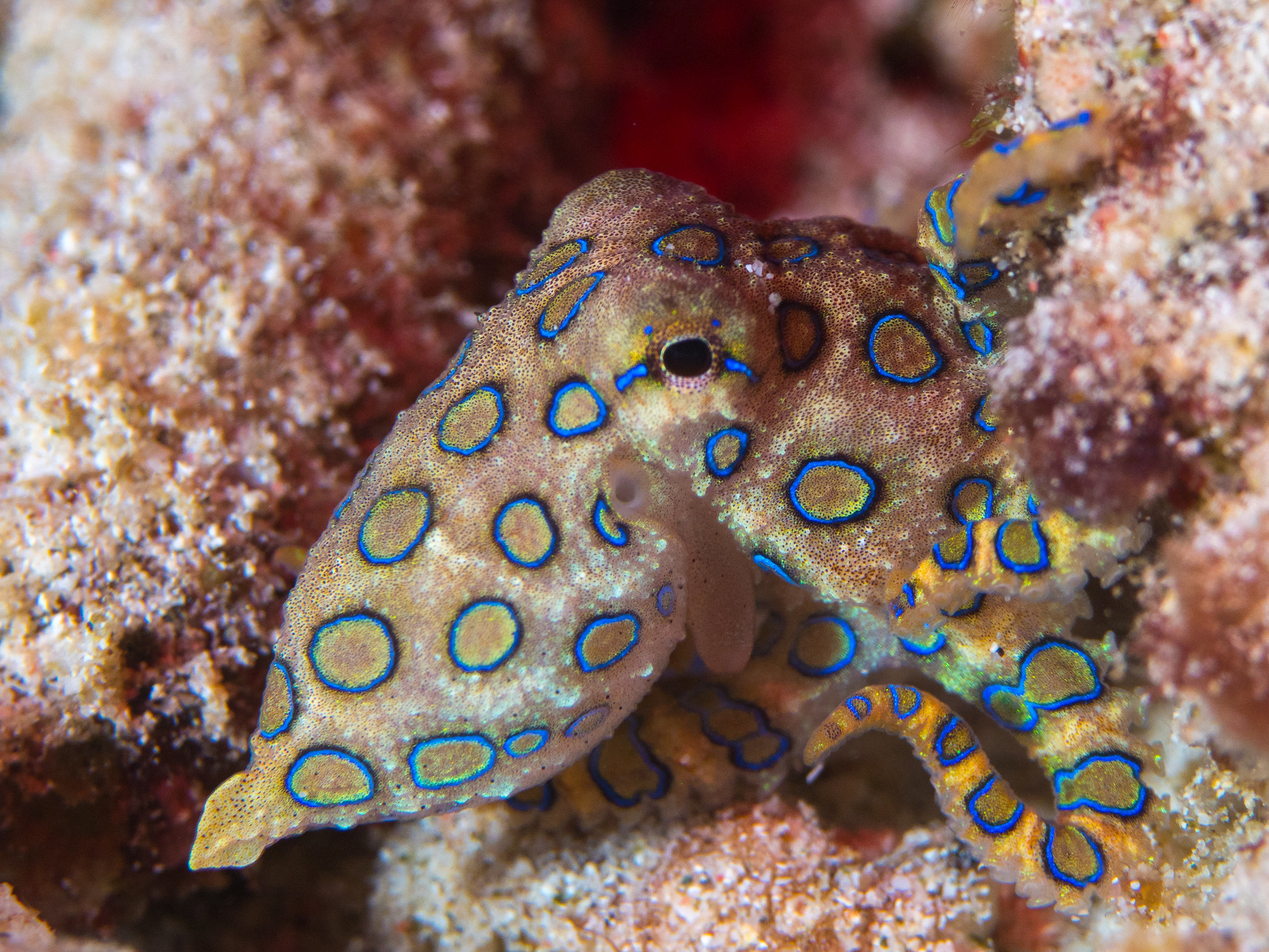

Introduction
Hapalochlaena lunulata is a salt water mollusc.
This sheet is currently being prepared. The texts currently proposed come from our data model or are being drafted. To request priority for this content, you can write to us HERE.
Who is it?
Genus Hapalochlaena
Species of the Hapalochlaena genus are commonly called "blue ringed octopus". They are found in the Indo-Pacific region, especially from Australia to Japan. These octopuses are very poisonous. Their venom, contained in the saliva, has a strong paralyzing effect. The octopuses use it to immobilize their favorite prey : crustaceans.
All Hapalochlaena species have eight short arms and a slightly flattened head that ends in a point. Their colour vary depending on the environment and context. They are indeed able to change colour to escape predators or hunt. Their life expectancy is short and like most cephalopods, females die at the end of the reproductive cycle.
Morphology
-
Size5 - 12 cm
-
Coloursvivid
-
Mimicrymultiple
-
Type of mouthbeak
-
ChromatophoresYes
-
Size5 - 12 cm
-
Coloursvivid
-
Mimicrymultiple
-
Type of mouthbeak
-
ChromatophoresYes
How to recognize This mollusc ?
Hapalochlaena lunulata measures between 5 and 12 cm.
Behaviour & Life cycle
-
SociabilityThe following information corresponds to the mode of sociability once sexual maturity has been reached.solitary
-
Way of livingnocturnal
-
VenomousYes
-
Dietpredator
Chromatophores are pigment cells that reflect light in the integument of some animals. They are mostly responsible for the color of the skin and eyes of cold-blooded animals and are created by the neural crest during embryonic development.
Hapalochlaena lunulata is a mollusc solitary naturally found on the bottom. This species is carnivorous . This mollusc lives mainly at night. Usually, it leaves its hiding place and starts to be active once it gets dark.
Although Hapalochlaena lunulata is non-territorial, it is sometimes aggressive towards other species.
Reproduction
-
Reproductiondont le mode de reproduction est encore inconnu
Hapalochlaena lunulata is a mollusc dont le mode de reproduction est encore inconnu.
Life-threatening species
-
VenomousYes
This species is venomous and can cause serious injuries when touched. In the most serious cases, it can cause death.
Origin and distribution
Conservation status of populations (IUCN)
What is its habitat?
Natural environment characteristics
-
Temperature25 - 30 °C
-
Depth1 - 10 m
-
EnvironmentActive pelagic
Biotope presentation
Hapalochlaena lunulata is most often found at a depth between 1m and 10m. However, it is not impossible to find this species at other depths.
Species of the same biotope
Fishkeeping
Not recommended
We do not recommend keeping this species in an aquarium. It has unpredictable needs which, if not met, generate significant stress, potentially leading to a shorter life expectancy, an interruption of its growth or the development of pathogens.
To go further
Sources & Contributions
Participation & Validation
The Fishipedia team and specialist contributors are committed to providing high-quality content. However, although the information comes from scientific sources or testimonials from specialists, the cards may contain inaccuracies.
Translation
Translation done with the valuable contribution of our translators, who make this information available to a wider audience. We sincerely thank them for their commitment.
Bibliographic references
The reproductive biology of two species of pygmy octopuses hapalochlaena lunulata and octopus bocki - - 1998.
Cephalopods of the world - Volume 3 Octopods and Vampire Squids - FAO Fisheries Synopsis - 2014.
Scientific partners
Tags
Species of the same family
Same genus
Species of the same biotope
